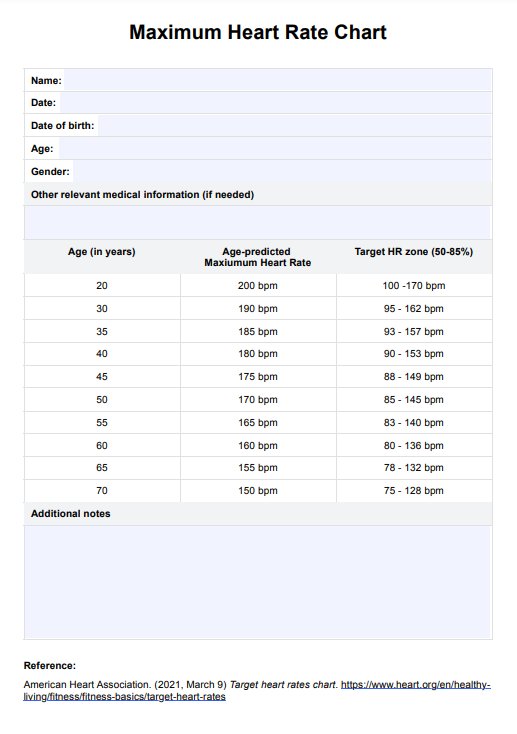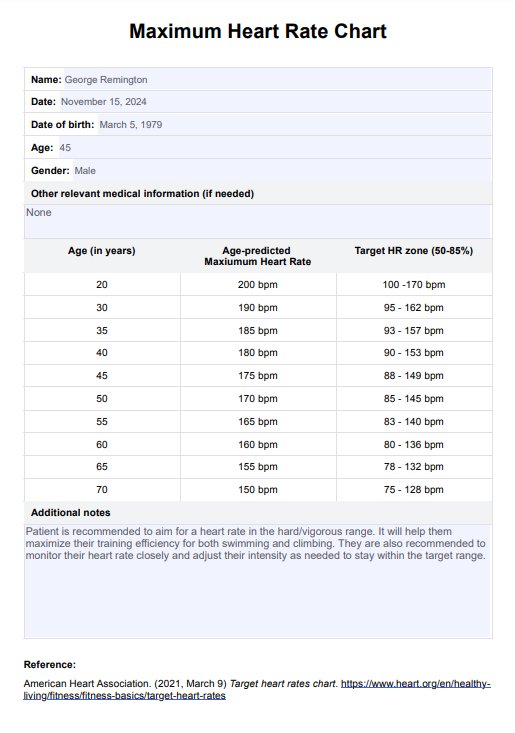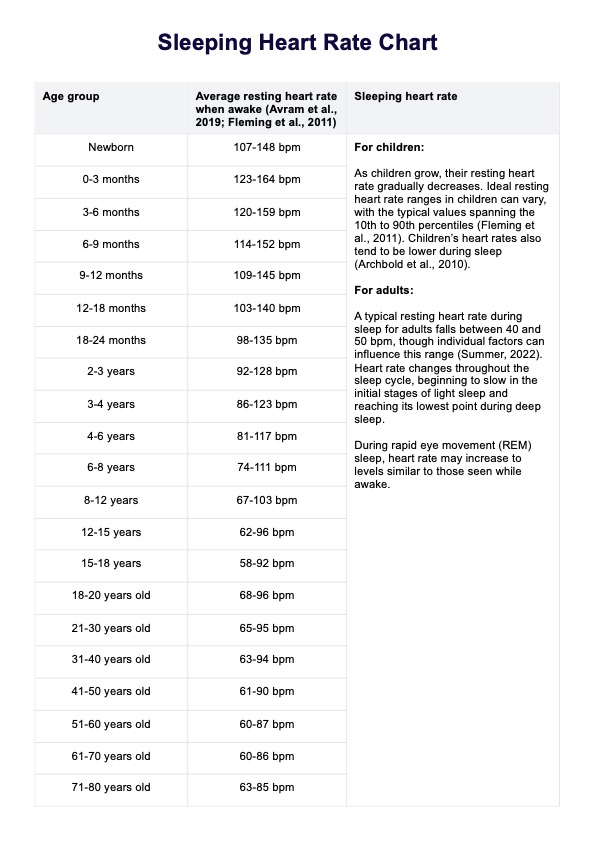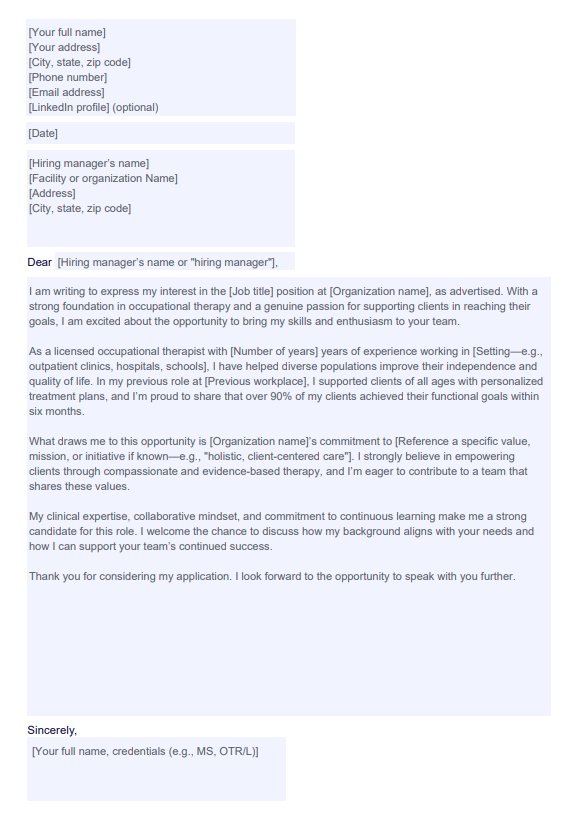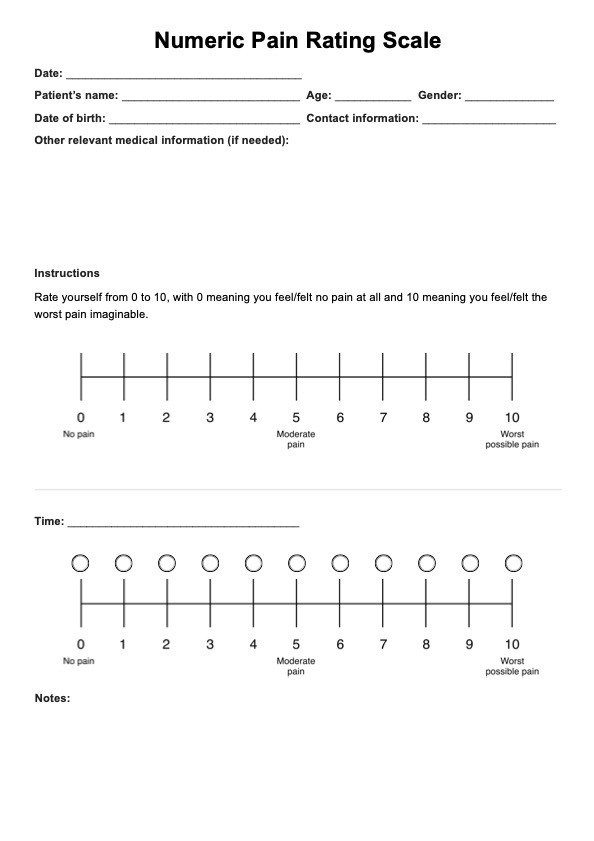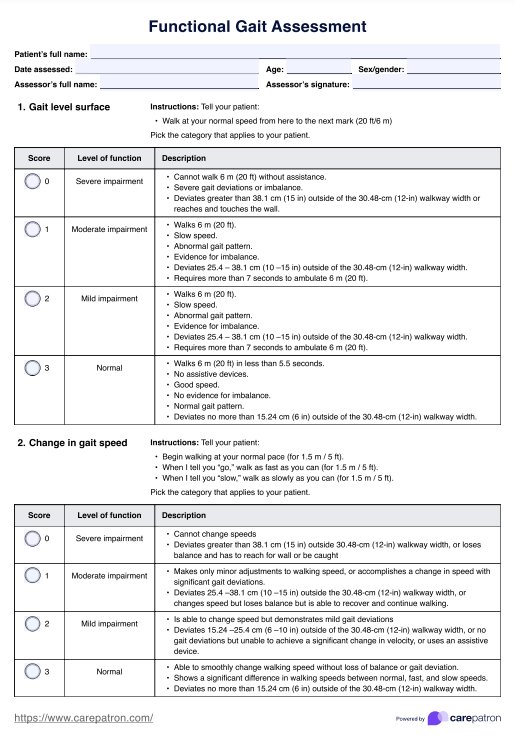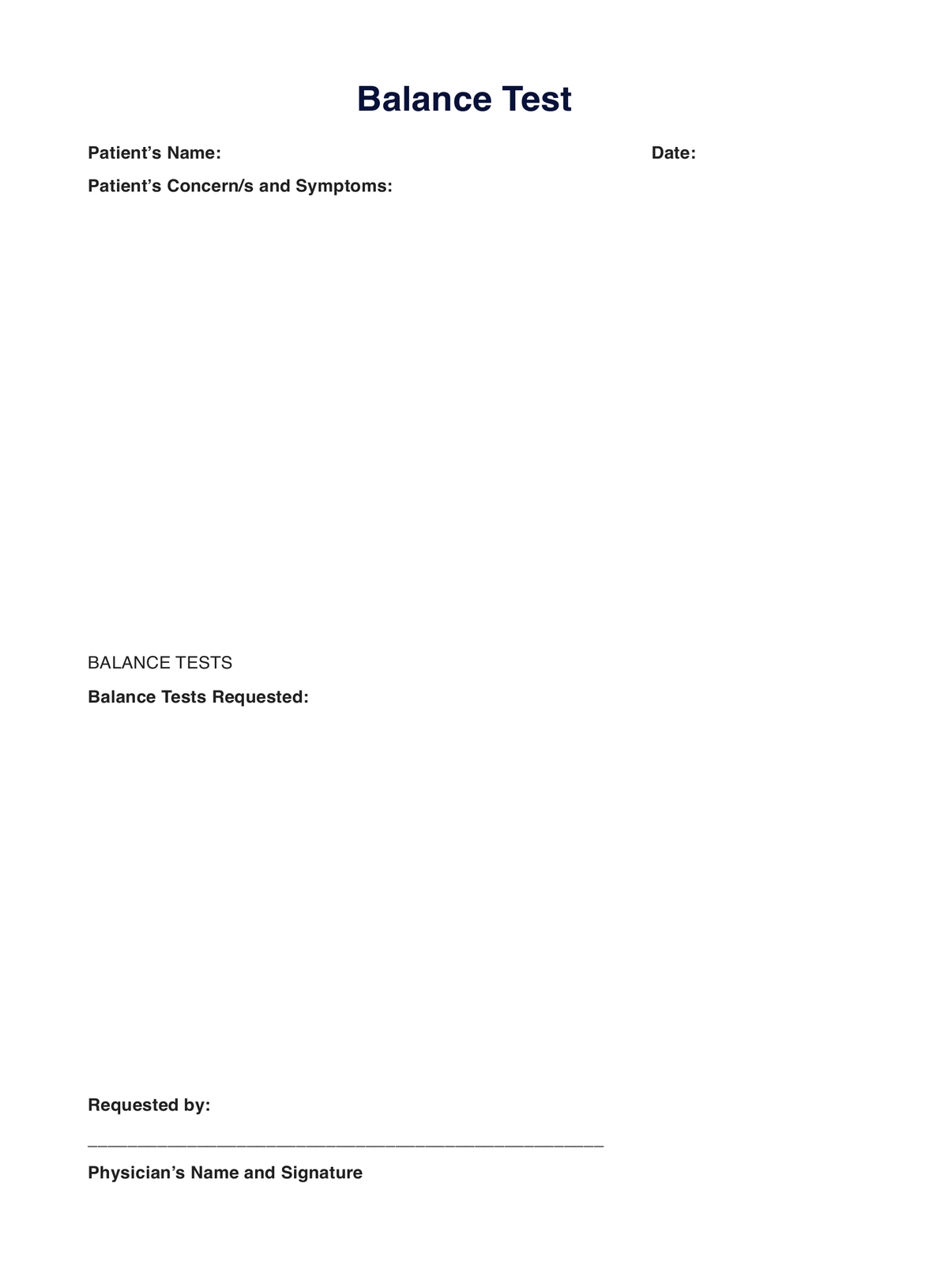Maximum Heart Rate Chart
Help your patient maximize their fitness routine by giving them a copy of our Maximum Heart Rate Chart template.


Understanding the different heart rates
The pulse is a crucial indicator of heart health and overall fitness. One's heart rate can vary depending on factors such as age, fitness level, and physical activity, which is why people of the same age can have different resting and maximum heart rates.
There are two primary types of heart rates to consider:
Resting heart rate (RHR)
This is one's heart rate when resting, such as sitting or lying down. It's a good measure of one's heart's efficiency; the lower the resting heart rate, the more efficiently the heart works. A normal resting heart rate for adults ranges from 60 to 100 BPM.
Maximum heart rate (MHR)
This is the highest rate at which one's heart can beat during intense physical activity. It's a critical factor in determining one's exercise intensity levels. The most common way to estimate the average maximum heart rate is by using the formula 220 minus one's age. For example, if one is 30 years old, their estimated maximum heart rate would be 190 BPM (220 - 30 = 190).
Maximum Heart Rate Chart Template
Maximum Heart Rate Chart Example
What is a Maximum Heart Rate Chart?
A Heart Rate Chart is a visual reference tool that allows individuals and healthcare practitioners to monitor heart rate. On the other hand, Maximum Heart Rate Charts are used in fitness and health settings to determine the appropriate heart rate zones for individuals during exercise. The chart typically outlines various heart rate ranges based on age, corresponding to different exercise intensity levels.
The Maximum Heart Rate Chart provides a guideline for safely and effectively targeting heart rate zones during physical activities. By knowing their maximum heart rate (MHR), individuals can tailor their workouts to stay within a specific normal heart rate range that aligns with their fitness goals, such as fat burning, cardiovascular improvement, or high-intensity training.
Our Maximum Heart Rate Chart template includes sections for:
- Age: The chart is divided by age groups, as maximum heart rate decreases with age.
- Maximum Heart Rate: The average highest heart rate individuals can safely achieve through exercise, typically calculated as 220 minus the person's age.
- Target HR zone (50 - 85%): The chart also provides the target heart rate zones to help individuals gauge the intensity of their workouts.
Health professionals can use a Maximum Heart Rate Chart to guide their patients or clients in achieving optimal exercise intensity levels, ensuring safety and effectiveness in their fitness routines.
How does our Maximum Heart Rate Chart template work?
To make the most of our Maximum Heart Rate Chart template, health professionals and fitness enthusiasts can follow these simple steps:
Step 1: Access the template
Download the latest version of the Maximum Heart Rate Chart template from Carepatron or access it from our template library. The template is designed to be user-friendly and customizable to suit individual needs.
Step 2: Enter patient/client information
Fill in the patient's or client's name, age, and resting heart rate. This personal information helps tailor the heart rate chart to the individual's health profile.
Step 3: Refer to the chart
Use the chart to identify the maximum heart rate based on the person's age. The chart also provides target heart rate zones ranging from 50% to 80%. These zones are crucial for planning workouts that align with fitness goals and health conditions.
Step 4: Plan workouts
Based on the heart rate zones, plan workouts that target the desired intensity level. For example, if the goal is to improve cardiovascular endurance, focus on exercises that keep the heart rate within the moderate zone.
Step 5: Monitor and adjust
During workouts, you can ask clients to monitor their heart rate to ensure it stays within the targeted zone. They can keep track of this and inform you during consultation. Adjust the exercise intensity as needed to maintain the ideal heart rate.
By following these steps, health professionals and individuals can use the Maximum Heart Rate Chart template to optimize workout plans, improve fitness levels, and maintain heart health.
Benefits of using our Maximum Heart Rate Chart template
To help your patient unlock the full potential of their workouts and keep their heart health in check, knowing their maximum heart rate is a game-changer. Here's a rundown of the perks of knowing one's maximum heart rate and using our max heart rate chart template:
- Making tailored workouts: By knowing your patient's maximum heart rate, you can collaborate and design routines that hit just the right intensity, aiming for fat-burning, endurance, or high-intensity training.
- Prioritizing safety: The template is a handy guide to ensure that your patients are not overexerting themselves, especially if they're just starting, undergoing exercise testing, or have any underlying health concerns.
- Tracking progress: Having a template to keep tabs on one's target zone can help you and your patient see how their fitness improves over time. As their heart strengthens, they can work harder without maxing out their heart rate.
- Reaching personal goals: By knowing your patient's max heart rate, you can set achievable goals and unlock numerous health and fitness benefits tailored to the patient's unique capabilities.
- Gain insight into better health: The template allows you and your patient to get a clearer picture of the patient's overall cardiovascular health, which is crucial when designing an exercise plan for the patient.
What are the different exercise intensity zones?
Exercise intensity zones are heart rate ranges that signify different workout intensity levels. Each zone is based on a percentage of your maximum heart rate (MHR) and serves various fitness objectives, from improving heart health to enhancing athletic performance. Here's an overview of the main zones:
Very light (50-60% of MHR)
This zone is ideal for warming up and cooling down. It's gentle on the body, enhancing blood flow without significantly taxing the cardiovascular system. Activities in this zone might include slow walking or light stretching.
Light (60-70% of MHR)
Engaging in this zone helps with fat burning and builds endurance. It's suitable for longer, less intense workouts and is perfect for those just starting their fitness journey. Exercises might include brisk walking or light cycling.
Moderate (70-80% of MHR)
This zone challenges the cardiovascular system, improving aerobic capacity and endurance. It's where you might engage in steady-state cardio or moderate-intensity exercise, like jogging or moderate cycling, to increase heart muscle and lung function.
Hard/vigorous (80-90% of MHR)
Activities in this zone improve speed and power. It's ideal for interval training, a high-intensity workout, or another vigorous exercise program that pushes your limits, such as sprinting or intense cycling. Training in this zone can increase your lactate threshold, enhancing your ability to perform high-intensity activities for longer.
Maximum (90-100% of MHR)
This zone is reserved for short bursts of maximal effort activities, like sprint finishes or high-intensity interval training (HIIT). It's not sustainable for long periods due to the high demand on the heart and muscles. If one is aiming for a moderate workout, their target heart rate zones should be 50-70% of their max. For a tougher session, push the target heart rate zone to 70-90% to really boost the heart and muscle power. Mixing moderate and vigorous activity is the key to a well-rounded fitness plan.
Understanding and utilizing these exercise intensity zones can help tailor your workouts to meet specific fitness goals, whether to lose body weight, build endurance, or improve athletic performance.
Commonly asked questions
One's maximum heart rate can be estimated by subtracting age from 220. For example, if a person is 30 years old, their estimated maximum heart rate would be 190 beats per minute (BPM).
Knowing one's maximum heart rate helps determine the intensity of one's workouts, ensuring one exercises within a safe and effective range for one's fitness goals.
Generally, maximum heart rate does not significantly increase with training. However, one's heart's efficiency and endurance can improve, allowing one to work out at higher intensities for longer periods.
During high-intensity workouts, one might reach 85-90% of one's maximum heart rate. However, aiming for 60-80% of one's max heart rate for most exercise sessions is considered safe and effective.


